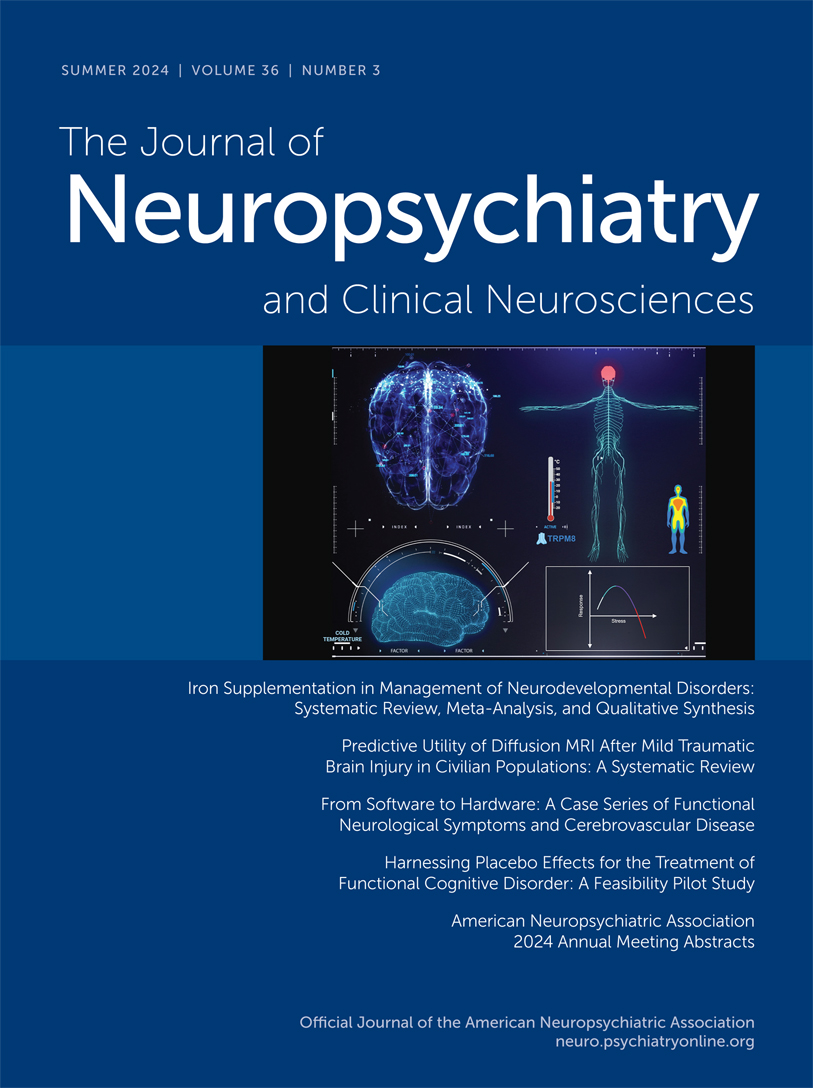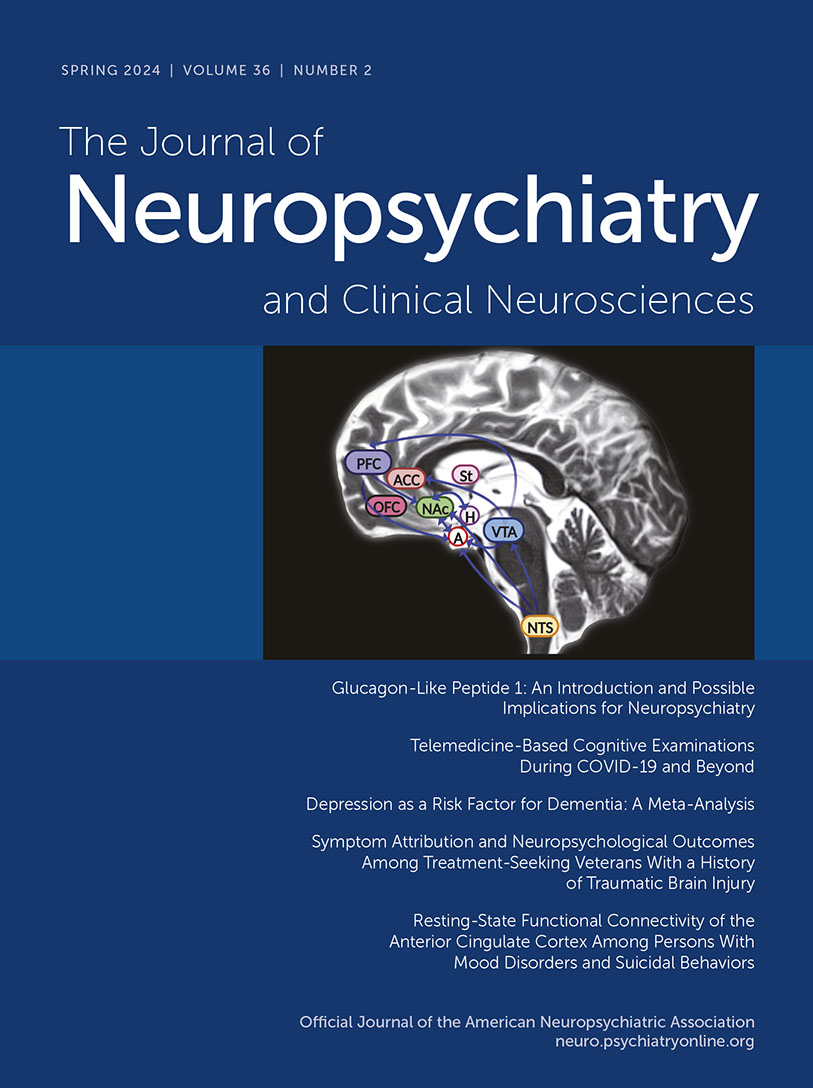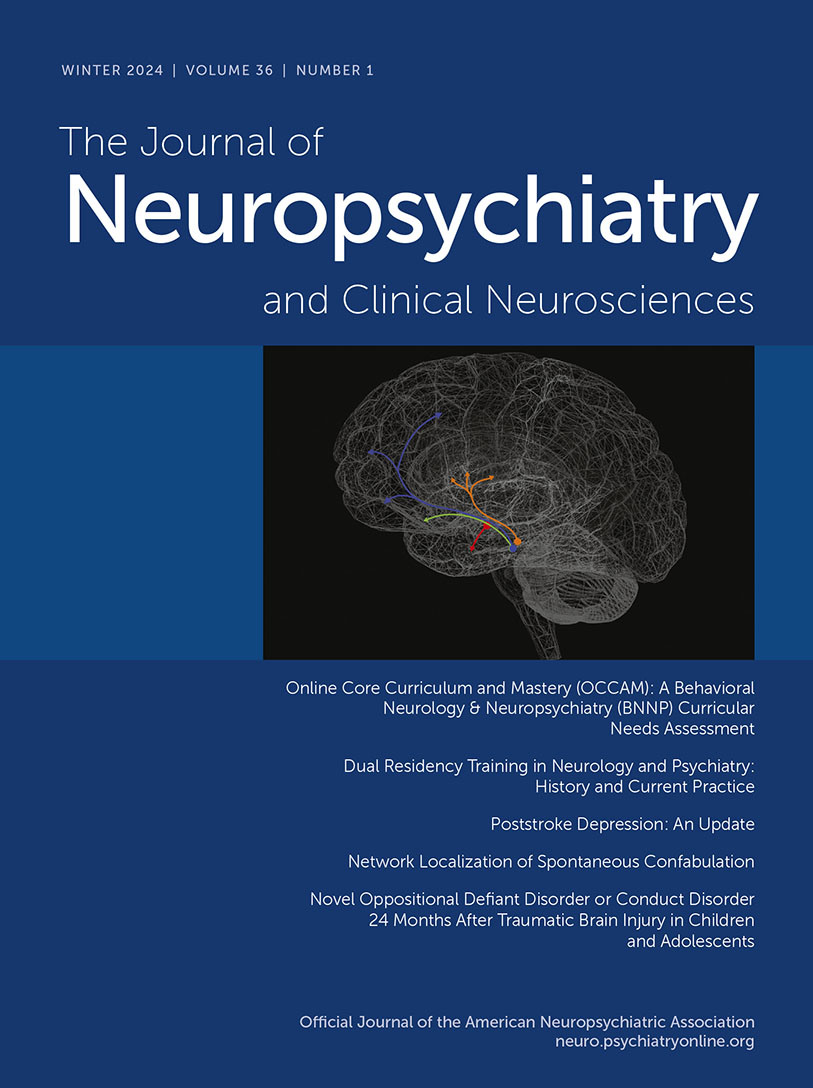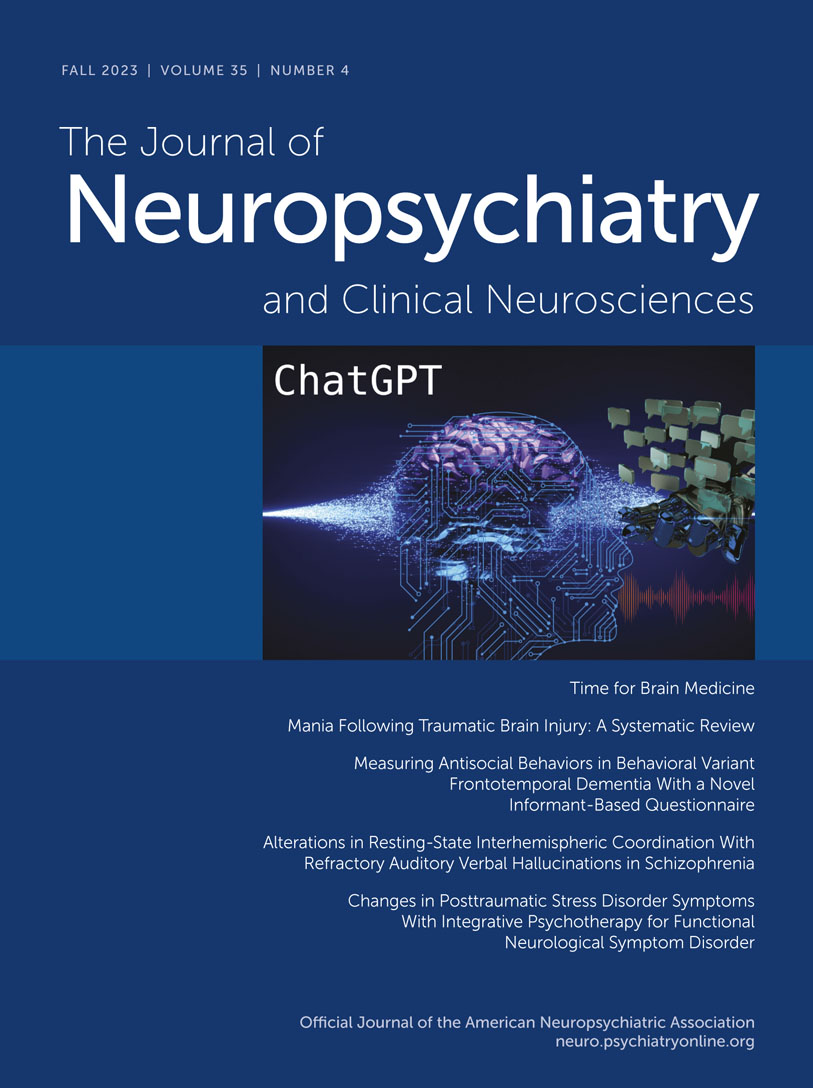The Journal of Neuropsychiatry and Clinical Neurosciences
- Volume 2
- Number 3
- August 1990
Publication date: 01 August 1990
Pages241–252Advances in the neurosciences and immunology provide a framework for understanding how mental health status may be a co-factor in the progression of human immunodeficiency virus (HIV) infection. The authors discuss the interrelatedness of the central ...
https://doi.org/10.1176/jnp.2.3.241Publication date: 01 August 1990
Pages256–260The encephalopathy associated with direct nervous system infection by the human immunodeficiency virus (HIV) has been recognized as one of the major debilitating aspects of the acquired immunodeficiency syndrome (AIDS) and of pre-AIDS conditions. A ...
https://doi.org/10.1176/jnp.2.3.256Publication date: 01 August 1990
Pages261–267Personality alterations were investigated in patients with dementia of the Alzheimer type (DAT), multi-infarct dementia (MID), and normal control subjects, using a standardized informant-rated personality inventory. Personality alterations were observed ...
https://doi.org/10.1176/jnp.2.3.261Publication date: 01 August 1990
Pages268–274Whole-blood serotonin (5-HT) and plasma norepinephrine (NE) were studied in 16 autistic children, 21 siblings of autistic children, and 53 parents of autistic children. Both plasma NE and whole-blood 5-HT were negatively correlated with vocabulary ...
https://doi.org/10.1176/jnp.2.3.268Publication date: 01 August 1990
Pages275–281A large sample of patients (N = 763) with Tourette syndrome (TS) responded to a questionnaire dealing primarily with symptoms, treatment history, and associated disorders. The shrinking duration between symptom onset and diagnostic confirmation confirms ...
https://doi.org/10.1176/jnp.2.3.275Publication date: 01 August 1990
Pages282–287Clinicians have long observed an anecdotal association of Parkinson's disease with stoic, industrious, and inflexible personality traits, both premorbidly and after the onset of motor symptoms. In this study, using the Tridimensional Personality ...
https://doi.org/10.1176/jnp.2.3.282Publication date: 01 August 1990
Pages288–296This article sets forth a multiaxial system for cataloging individuals who manifest destructive behavior toward themselves, others, or property. An initial codification to describe the characteristics of the destructive behavior of the individual is ...
https://doi.org/10.1176/jnp.2.3.288Publication date: 01 August 1990
Pages297–300This is the first in a series of articles that provide a guide to the understanding and effective use of diagnostic tests in clinical and research endeavors. In this article, we briefly describe some general properties of diagnostic tests. We then focus ...
https://doi.org/10.1176/jnp.2.3.297Publication date: 01 August 1990
Pages313–319The ventral tegmental area (VTA) is the major dopaminergic (DA) center responsible for the innervation of the prefrontal cortex, nucleus accumbens, and entorhinal region. These areas have been causally implicated in schizophrenia. Thus, the existence of ...
https://doi.org/10.1176/jnp.2.3.313Publication date: 01 August 1990
Pages319–322Brain electrical activity mapping (BEAM) and personality disorder assessment (Millon Clinical Multiaxial Inventory-II) were performed on a married couple and their four children. Three of the children had previously been identified as having obsessive ...
https://doi.org/10.1176/jnp.2.3.319Publication date: 01 August 1990
Pages322–325Secondary mania is increasingly recognized clinically, and consists of acute exhibition of manic symptoms without past or family history of affective disorder. It has been reported with toxic and metabolic disturbances, primary and metastatic brain tumors,...
https://doi.org/10.1176/jnp.2.3.322Article
Article
Past Issues
View Issues Archive
Vol. 36 | No. 3

Vol. 36 | No. 2

Vol. 36 | No. 1
